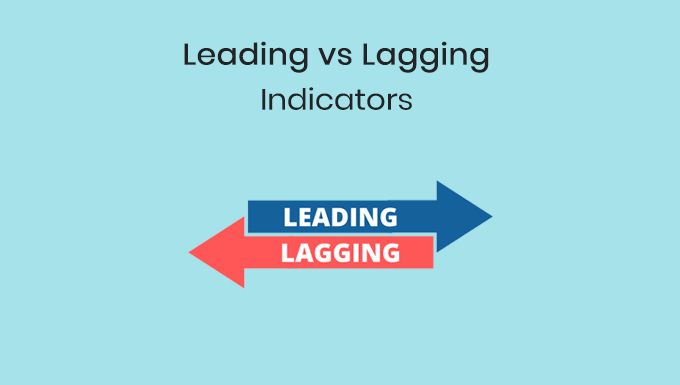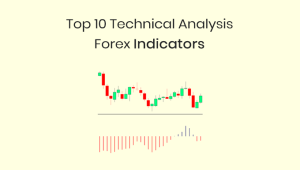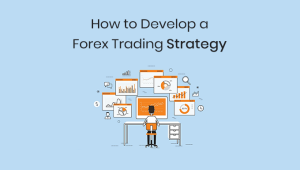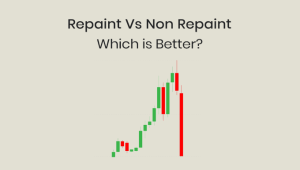Forex trading involves a lot of analysis and decision-making. One of the most crucial aspects of this process is the use of trading indicators. Traders often use these indicators to make informed decisions and increase their chances of success in the market. In this article, we’ll discuss the difference between leading vs lagging indicators, their advantages and disadvantages, and help you determine which type of indicator is better for your forex trading strategy.
What are Trading Indicators?
Trading indicators are tools used by forex traders to analyze market trends and predict future price movements. They are derived from mathematical formulas and applied to historical price data, providing traders with a visual representation of market patterns. Indicators can be classified into two main categories: leading indicators vs lagging indicators.
What are Leading Indicators?
Leading indicators are designed to predict future price movements and generate signals before a new trend or reversal occurs. They provide early warnings about potential changes in the market, allowing traders to anticipate shifts and adjust their strategies accordingly.
Examples of Leading Indicators
- Stochastic Oscillator: This indicator compares a currency pair’s closing price to its price range over a specific period. It is used to identify overbought or oversold conditions, signaling potential reversals.
- Relative Strength Index (RSI): RSI measures the strength of a currency’s price movement and identifies overbought or oversold conditions. It ranges from 0 to 100, with values above 70 indicating overbought conditions and values below 30 suggesting oversold conditions.
- Fibonacci Retracements: Fibonacci Retracement Levels are derived from the Fibonacci sequence and used to predict potential support and resistance levels during a market retracement.
How to Use Leading Indicators
When using leading indicators, traders should look for potential trading opportunities based on current market behavior.
For example, if the Stochastic Oscillator is showing that the market is oversold, traders may look to buy as the market is likely to reverse.
What are Lagging Indicators?
Lagging indicators, on the other hand, confirm existing trends and are used to validate price movements after they have already occurred. They provide valuable information about the strength and sustainability of a trend, helping traders make more informed decisions.
Examples of Lagging Indicators
- Moving Averages: Moving averages smooth out price data, making it easier to identify trends. They are calculated by taking the average closing price over a certain number of periods.
- Bollinger Bands: These bands consist of a moving average and two standard deviations, creating an upper and lower band. They are used to measure market volatility and identify potential reversals.
- MACD (Moving Average Convergence Divergence): MACD is a momentum indicator that measures the relationship between two moving averages, providing signals for potential trend reversals.
How to Use Lagging Indicators
When using lagging indicators, traders should look for confirmation of market trends and potential entry and exit points.
For example, if the moving average is trending upwards, traders may look to buy when the price dips to the moving average or sell when the price rises above the moving average.
Leading vs Lagging Indicators: Advantages and Disadvantages
Both leading and lagging indicators offer unique benefits and drawbacks for forex traders.
Let’s compare their advantages and disadvantages to help you make an informed decision.
Advantages of Leading Indicators
- Early Signals: Leading indicators provide early warnings of potential market changes, allowing traders to anticipate and capitalize on new trends.
- Better Entry Points: Because leading indicators signal potential reversals before they occur, traders can identify optimal entry points for their trades.
- Greater Profit Potential: Timely entry into a trade can increase profit potential, as traders can take advantage of price movements from the beginning of a trend.
Disadvantages of Leading Indicators
- False Signals: Leading indicators can generate false signals, leading to potential losses if traders rely solely on these tools for decision-making.
- Overreaction: Traders may overreact to leading indicator signals, entering or exiting trades prematurely, and missing out on potential profits.
Advantages of Lagging Indicators
- Confirmation: Lagging indicators confirm existing trends, providing traders with more confidence in their decision-making process.
- Reduced False Signals: Because lagging indicators validate price movements after they have already occurred, they are less prone to false signals, resulting in fewer misleading trading cues.
- Trend Stability: Lagging indicators help traders gauge the strength and sustainability of a trend, allowing them to make better decisions about when to enter or exit a trade.
Disadvantages of Lagging Indicators
- Late Entry: Lagging indicators can result in traders entering a trade late, potentially missing out on a significant portion of a trend’s profit potential.
- Delayed Exit: Similarly, lagging indicators may cause traders to exit a trade too late, reducing their overall profit or even turning a winning trade into a losing one.
Which One is Better for Forex Trading?
Ultimately, the decision to use leading or lagging indicators for forex trading depends on your trading style, goals, and risk tolerance. Both types of indicators offer unique benefits and drawbacks, and the most effective approach is often to combine them to gain a more comprehensive understanding of market trends.
For instance, you could use leading indicators to identify potential entry points and lagging indicators to confirm the strength of a trend. By utilizing both types of indicators, you can minimize the risks associated with false signals and delayed entries while maximizing your profit potential.
Remember, no indicator is perfect, and successful forex trading requires a well-rounded approach that incorporates technical analysis, fundamental analysis, and risk management strategies.
Conclusion
In conclusion, both leading and lagging indicators play essential roles in forex trading. While leading indicators provide early warnings of potential market changes, lagging indicators confirm existing trends and their sustainability. The best approach is to combine both types of indicators to enhance your trading strategy and maximize your chances of success in the forex market.
FAQs
Q: What are the main differences between leading and lagging indicators?
A: Leading indicators predict future price movements and generate signals before a new trend or reversal occurs. Lagging indicators confirm existing trends and are used to validate price movements after they have already occurred.
Q: Can I rely solely on leading or lagging indicators for my trading decisions?
A: No, it is not advisable to rely solely on either type of indicator for your trading decisions. A successful trading strategy should incorporate a combination of technical analysis, fundamental analysis, and risk management strategies.
Q: How can I minimize false signals when using leading indicators?
A: To minimize false signals when using leading indicators, consider combining them with lagging indicators to confirm the strength of a trend. Additionally, use multiple leading indicators and wait for confluence before entering a trade.
Q: Is it better to use a single type of indicator or a combination of indicators?
A: It is generally better to use a combination of indicators to gain a more comprehensive understanding of market trends and improve your overall trading strategy.
Q: Do professional forex traders use both leading and lagging indicators?
A: Yes, many professional forex traders use a combination of leading and lagging indicators to enhance their trading strategies and maximize their chances of success in the forex market.






